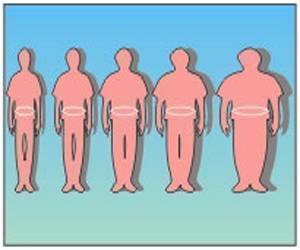Free trade increases wealth and competitiveness, delivering real benefits to families, farmers, workers, manufacturers, and consumers.

‘The US trade relations may have been an underlying population-level factor contributing to Canada's comparatively high rates of obesity, diabetes and noncommunicable diseases.’





The structuring of tariffs in NAFTA, which separated food and beverage syrups containing cane and beet sugars from HFCS, changed during NAFTA. Tariffs were removed from food and drink syrups made from HFCS between 1994 and 1998, but remained on those containing cane and beet sugars. "Here we take advantage of an exceptional natural experiment in which tariffs on HFCS were withdrawn, within an existing system of free trade in goods," writes Pepita Barlow, University of Oxford, Oxford, United Kingdom, with coauthors.
The study, covering 1985-2000, found that lower tariffs on HFCS were associated with an increase of about 41.6 kcal in caloric sweeteners supplied and likely consumed per person per day in Canada. This increase in the supply of HFCS correlates with a large rise in obesity rates, from 5.6% in 1985 to 14.8% in 1998, as well as increases in diabetes. Even seemingly small increases in caloric intake can contribute to weight gain, with small daily increases adding up over time.
The study provides evidence on the impact that a US free trade agreement, such as NAFTA, may have on diet and health.
"Our findings are consistent with the hypothesis that US trade relations may have been an underlying population-level factor contributing to Canada’s comparatively high rates of obesity, diabetes and noncommunicable diseases, through increased population-level exposure to added sugars," the authors write.
Advertisement
"Our analysis of the effects of NAFTA raises concern that these new trade deals could harm population health should lower tariffs lead to increased supply and potential consumption of unhealthy food items, particularly those containing HFCS," write the authors.
Advertisement
"These limitations notwithstanding, we find evidence that lower tariffs following NAFTA were associated with increased supply and likely consumption of caloric sweeteners in Canada including potentially hazardous HFCS," they state.
"A key message is that US free trade agreements can increase exposure to potentially hazardous commodities -- it’s as much about changes to the harmful ingredients in peoples’ diets as it is about the total number of calories consumed," says Ms. Barlow. The authors urge that when negotiating trade agreements, other countries should be aware of these potential effects.
In a related commentary, Dr. Ronald Labonté, School of Epidemiology, University of Ottawa, with coauthor Ashley Schram, writes, "the uncertainty surrounding future trade negotiations, together with the economic impacts and societal value of trade and investment agreements being increasingly questioned in the mainstream media, provides public health with a new opportunity to influence the conversation. Public health should take advantage of the newly shifted terrain to make the case that any trade or investment policy that prizes economic growth over reducing health inequities and enhancing ecological sustainability is bad policy."
He commends the study authors for their innovative approach to research, important for supporting evidence-based policy for trade and health.
Source-Eurekalert












